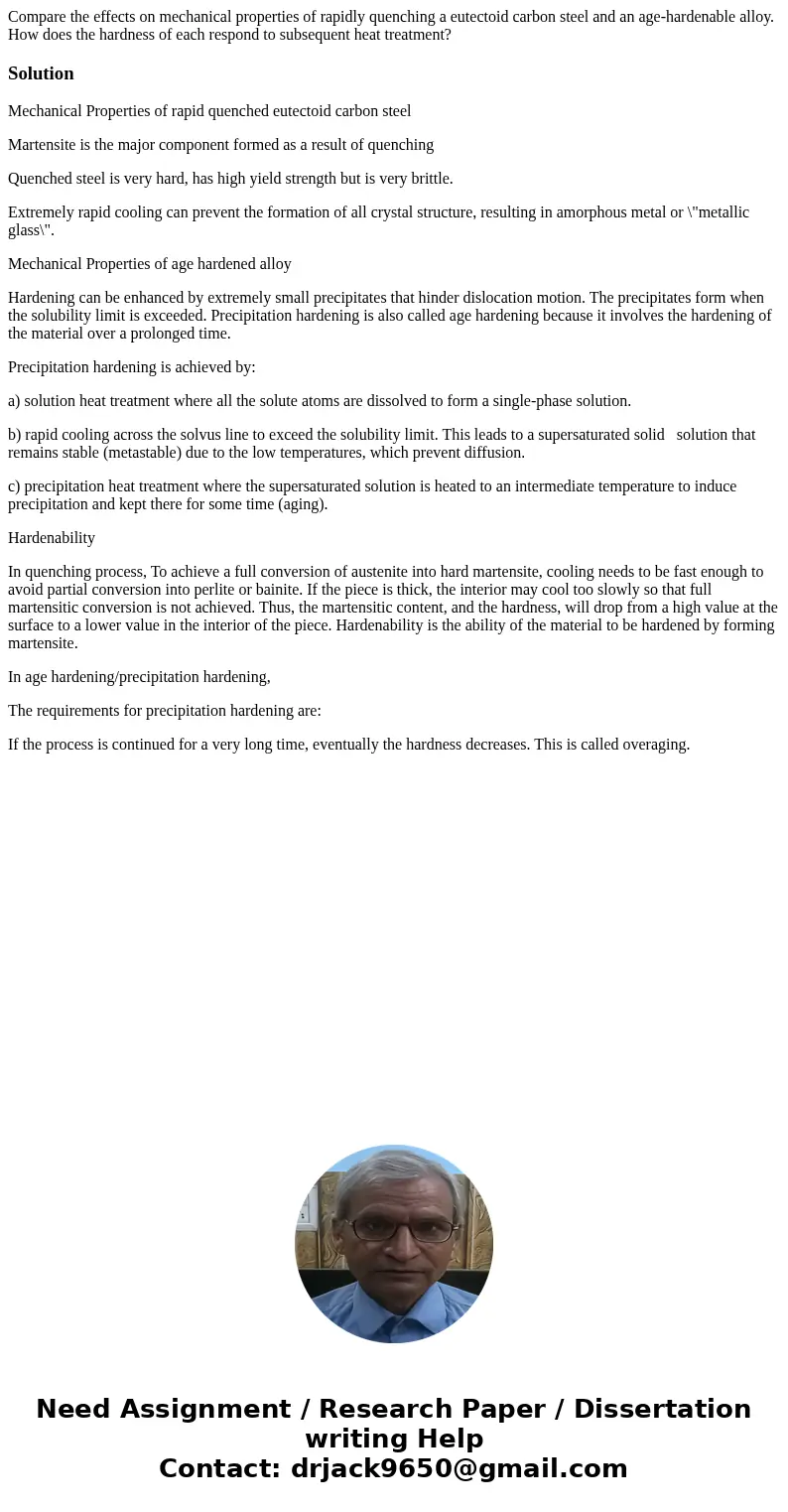Compare the effects on mechanical properties of rapidly quen
Solution
Mechanical Properties of rapid quenched eutectoid carbon steel
Martensite is the major component formed as a result of quenching
Quenched steel is very hard, has high yield strength but is very brittle.
Extremely rapid cooling can prevent the formation of all crystal structure, resulting in amorphous metal or \"metallic glass\".
Mechanical Properties of age hardened alloy
Hardening can be enhanced by extremely small precipitates that hinder dislocation motion. The precipitates form when the solubility limit is exceeded. Precipitation hardening is also called age hardening because it involves the hardening of the material over a prolonged time.
Precipitation hardening is achieved by:
a) solution heat treatment where all the solute atoms are dissolved to form a single-phase solution.
b) rapid cooling across the solvus line to exceed the solubility limit. This leads to a supersaturated solid solution that remains stable (metastable) due to the low temperatures, which prevent diffusion.
c) precipitation heat treatment where the supersaturated solution is heated to an intermediate temperature to induce precipitation and kept there for some time (aging).
Hardenability
In quenching process, To achieve a full conversion of austenite into hard martensite, cooling needs to be fast enough to avoid partial conversion into perlite or bainite. If the piece is thick, the interior may cool too slowly so that full martensitic conversion is not achieved. Thus, the martensitic content, and the hardness, will drop from a high value at the surface to a lower value in the interior of the piece. Hardenability is the ability of the material to be hardened by forming martensite.
In age hardening/precipitation hardening,
The requirements for precipitation hardening are:
If the process is continued for a very long time, eventually the hardness decreases. This is called overaging.

 Homework Sourse
Homework Sourse